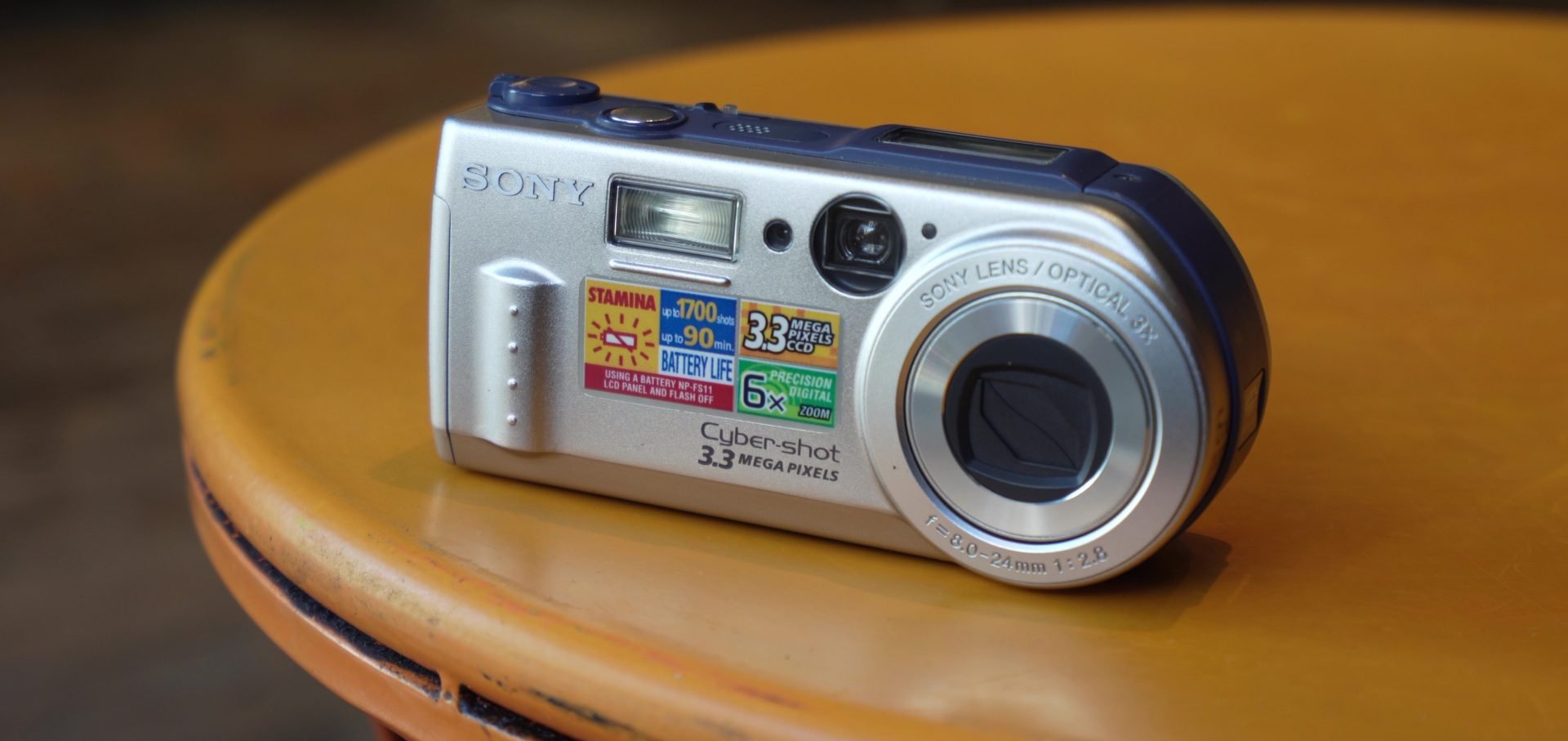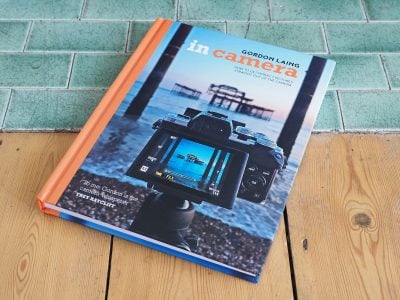Sony Cyber-shot P1 retro review
-
-
Written by Gordon Laing
Welcome back vintage technology fans, and say hello to the Sony Cyber-shot P1, the first in a hugely popular series of impressively compact digital cameras. The P1 launched in September 2000, sporting a 3 Megapixel sensor and a 3x optical zoom which neatly folded flush inside the body when powered down.
The P-series was Sony flexing its miniaturisation skills, with the P1 essentially packing most of what everyone loved from the Cyber-shot S70 launched six months previously, into a body roughly half the size and lacking unsightly protrusions.
I originally tested the P1 over two decades ago for MacUser magazine, when it cost around $800 or £600, and I remember at the time marvelling at its size. Fast-forward to 2022 and I bought a second hand P1, boxed and in good condition for 25 pounds from eBay, and in this video I’ll take it out around Brighton to see how it looks and feels 22 years after it was first launched.
The P1 sported a unique shape and style, like a chunky candy bar with a distinctive curved edge around the lens housing that became the signature of the series going forward.
Much of the design DNA was clearly inherited from the earlier S70, seen here on the right, with the silver body featuring a thick blue stripe running along the top and similar controls around it.

The P1 body was almost the same width as the S70 and much the same thickness as the main part of that model too, but unlike the S70, it switched the fixed lens housing for an extendable one allowing it to maintain the slimness when powered-off. In fact the lens folded neatly away to become flush with the front surface and the body was a good 15mm shorter too, giving it a much more compact appearance and more easily squeezing into pockets. Sony also sold an optional underwater housing for it.
You might assume the larger S70 would be more comfortable to hold, but the simple addition of a scoop for your thumb on the back of the P1 not only allowed you to grip it more securely, but also avoided pushing against the zoom controls.
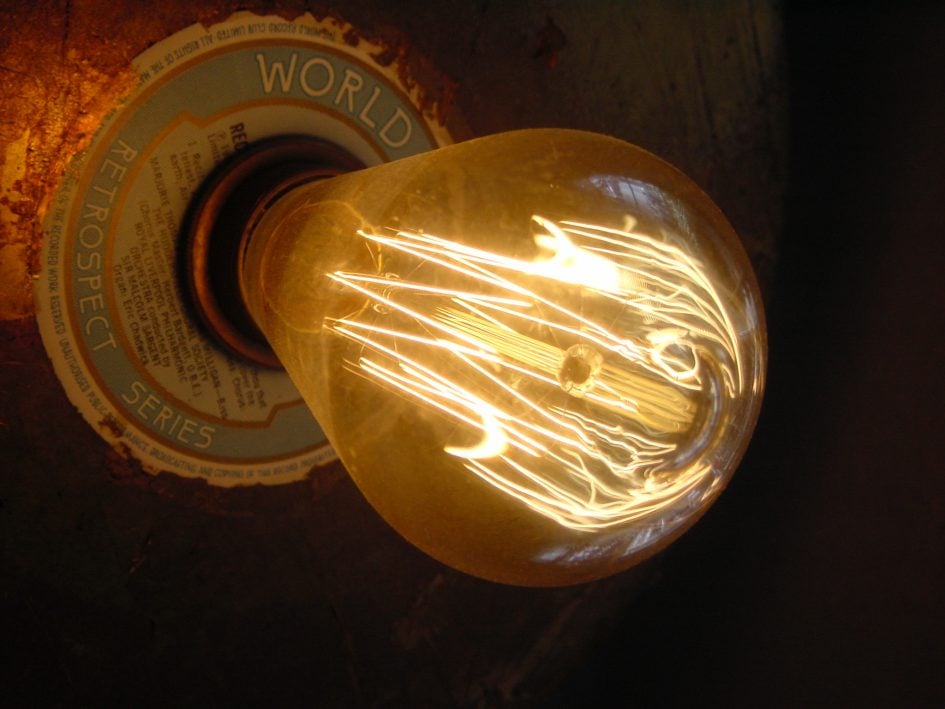
On the top of the camera, the P1 featured an LCD info screen, power slider, shutter release and a similar three-position mode dial to the S70, setting it to movies, stills or playback.
Annoyingly like other Sony’s of the day, the screen unhelpfully indicated the number of photos you’d taken, not the actual number remaining. So here the 59 means I’ve taken 59 pictures and the flashing icon means I’m running perilously low on memory, but without any firmer indication of how many more I can take.
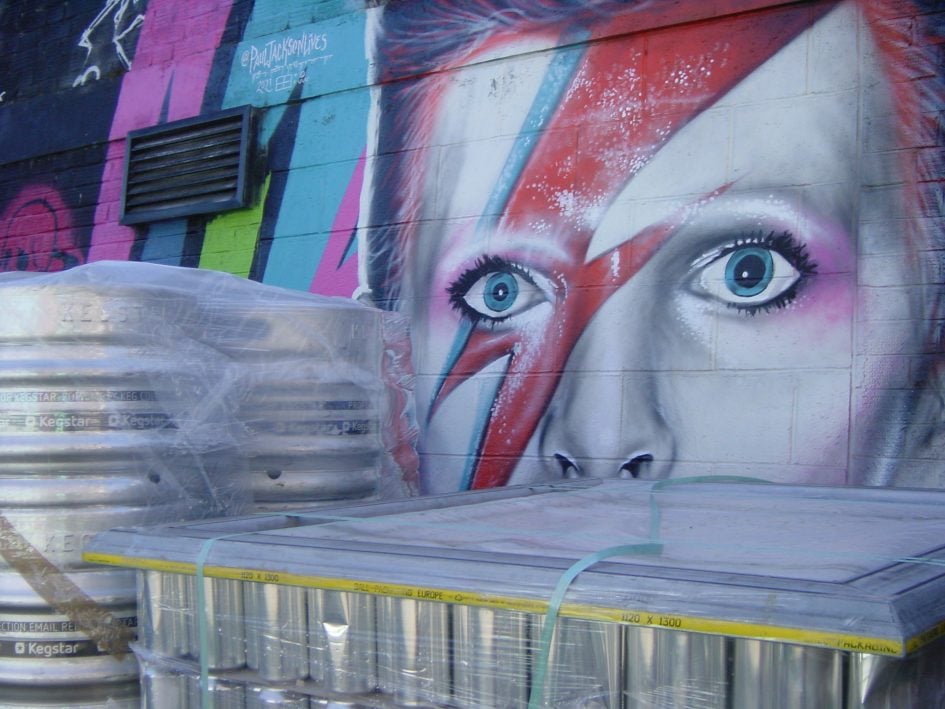
Round the back is the same zoom rocker as the S70 in the top right corner, and much the same buttons too although now positioned to the left of the screen rather than above it. Both cameras had four-way joypad style thumb rockers, but the P1’s felt less spongey and more positive to me.
For composition, both the P1 and S70 offered basic optical viewfinders and while the P1’s view through it is a little smaller, neither allowed reliable framing, especially at closer distances.
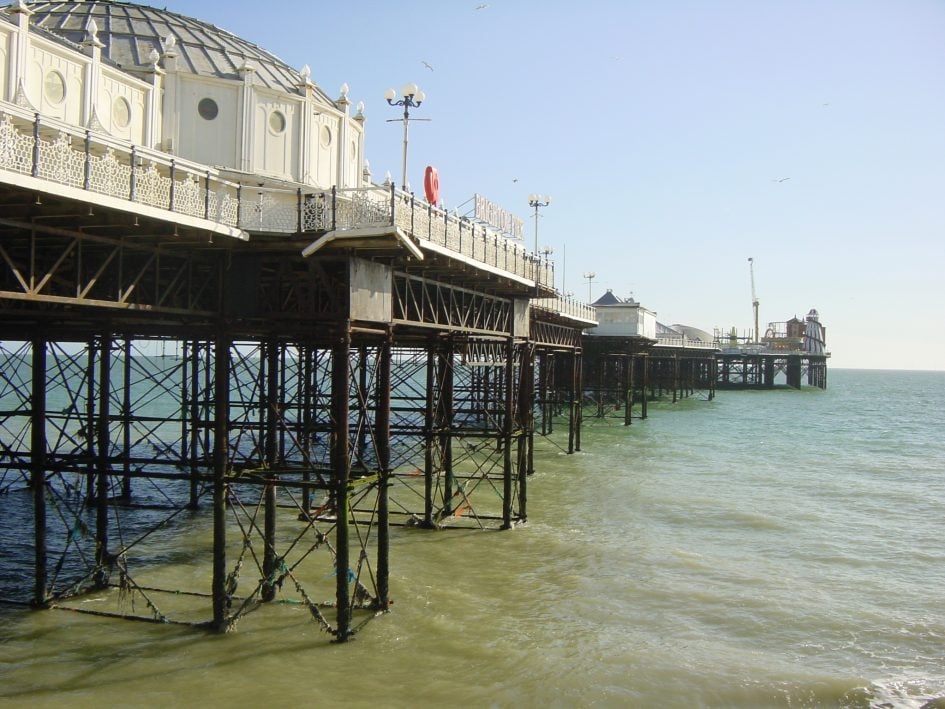
For more accurate coverage, albeit still not 100%, you’ll need to use the screen on the back which like the S70 can be toggled on and off to save power using the LCD button.
Even back in 2000, the P1’s screen was pretty small at just 1.5in compared to the more generous 2in screen on the S70, but both panels shared the same 123k dot resolution which meant the P1’s displayed image and menus looked crisper. The backlight on my S70 screen is showing its age, but when comparing them side-by-side in 2022, the P1’s screen was noticeably brighter and much easier to see in daylight.

For connectivity, the P1 had a 3.5mm AV output on the side, along with a DC input and USB port behind a flap on the back. As such it may have lacked the flash sync socket of the S70, but by employing a more standard USB port, you’re more likely to get it working today. In fact I use my P1 as a USB Memory Stick reader.
Yep, like other Sonys at the time, the P1 recorded onto the original full-length chewing gum style Memory Sticks which slotted into the battery compartment behind a door on the flat side. At the time, most cameras were sold with memory cards to get you started, but Sony was more stingy than rivals, bundling the P1 with an 8MB stick which could only squeeze in around five best quality JPEGs.

Meanwhile, the P1 was powered by the NP-FS11 InfoLithium battery pack which cleverly provided accurate feedback to the remaining life on-screen. Like the S70, the battery was charged within the camera using a proprietary AC adapter, although the specs and connectors are different on both models.
Sony quoted 70 minutes worth of recording on the P1 versus 110 from the larger FM50 housed in the S70, but over two decades after they were born, none of these packs are likely to hold charge anymore, including the one supplied with my second hand camera.
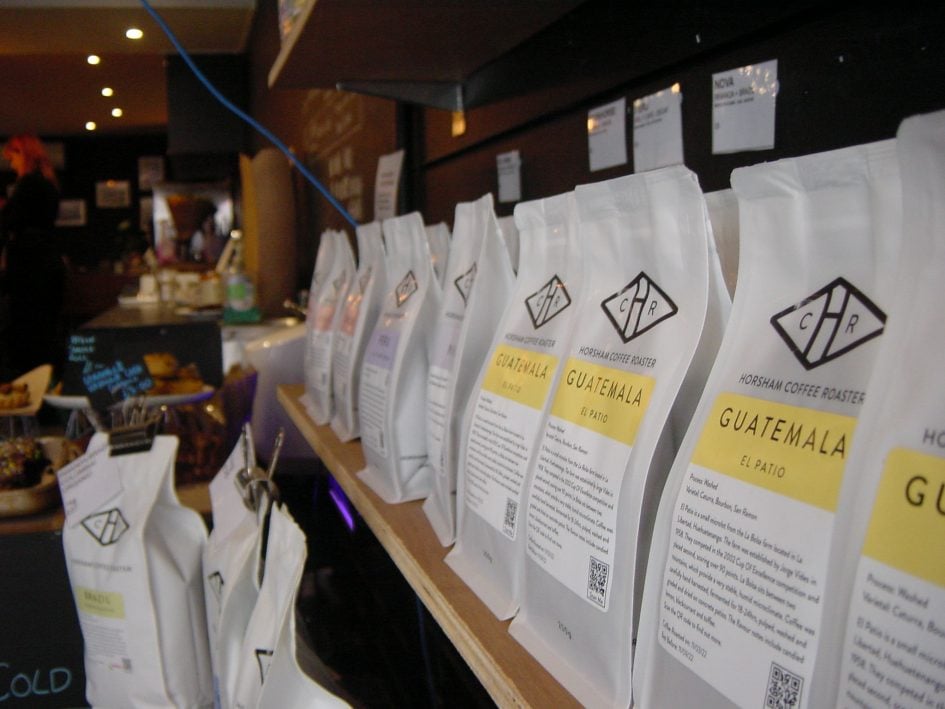
Luckily modern replacements are still on sale and I bought one from Subtel for a tenner – thankfully my P1 came with a working AC adapter, so I was able to charge the new battery inside the camera. It also meant I could use the P1 as a battery charger for an old F505 camera which shares the same pack but won’t charge it internally.
Ok now for the lens, with the P1 offering a 3x range equivalent to 39-117mm and an aperture of f2.8-5.6. The S70 also offered a 3x range, but a tad wider at 34-102mm and much brighter too at f2-2.5. The S70 also offered closer focusing, full aperture and shutter priority lacking from the P1, along with a small selection of preset manual focusing distances, and prominent branding by Carl Zeiss.

But the S70 was slower to power-up and despite owning one, I frequently forgot to remove the lens cap, forcing me to power off and on again. In contrast, the P1 not only powered-up quicker, but its automatic lens cover was so much more convenient, and again the housing folded back inside the body when powered off.
Behind each lens was the same sensor, a 1 /1.8in CCD with 3.3 Megapixels, capturing images with a maximum resolution of 2048×1536 pixels or 15 second video clips at up to 320×240 pixels at 15fps.
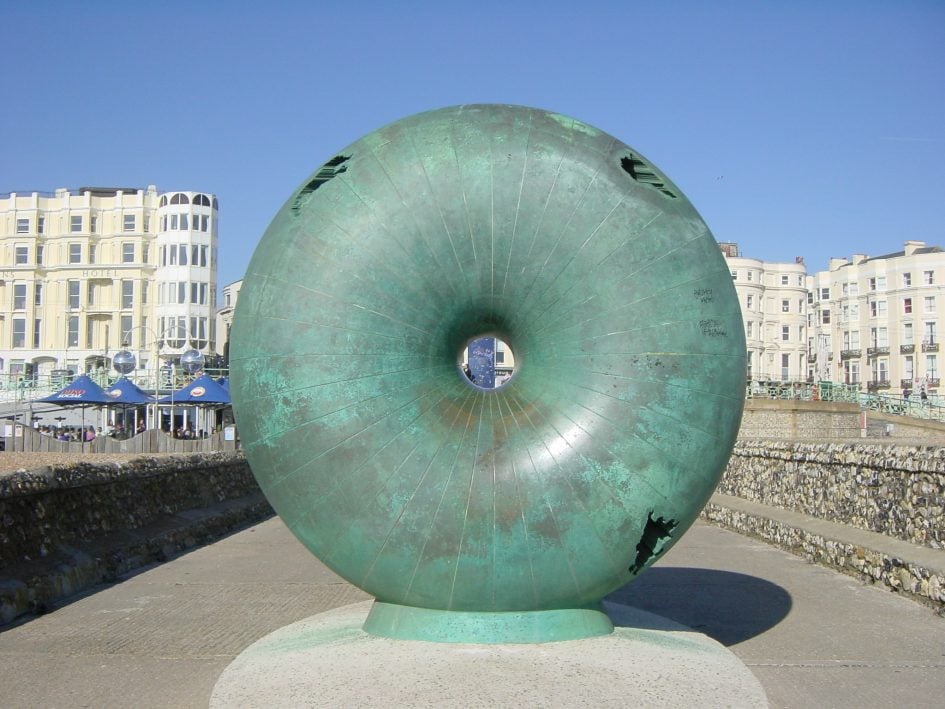
Pushing the control rocker upwards on either camera fires-up the menu bar display, allowing you to set the self timer, choose from four picture effects, adjust the image quality and type, as well as manually adjusting the sharpness and white balance, the latter on the P1 offering indoor, outdoor, auto or hold. Sony loved its tiny menus and fonts back in the day, made even smaller by the P1’s 1.5in screen, and today I can barely read them without glasses.
Like other Sony’s at the time you could choose lower image resolutions, but there was only one JPEG compression, so if you wanted the full 3.3 Megapixels, you’d be looking at files around 1.4MB each which could quickly fill smaller Memory Sticks.
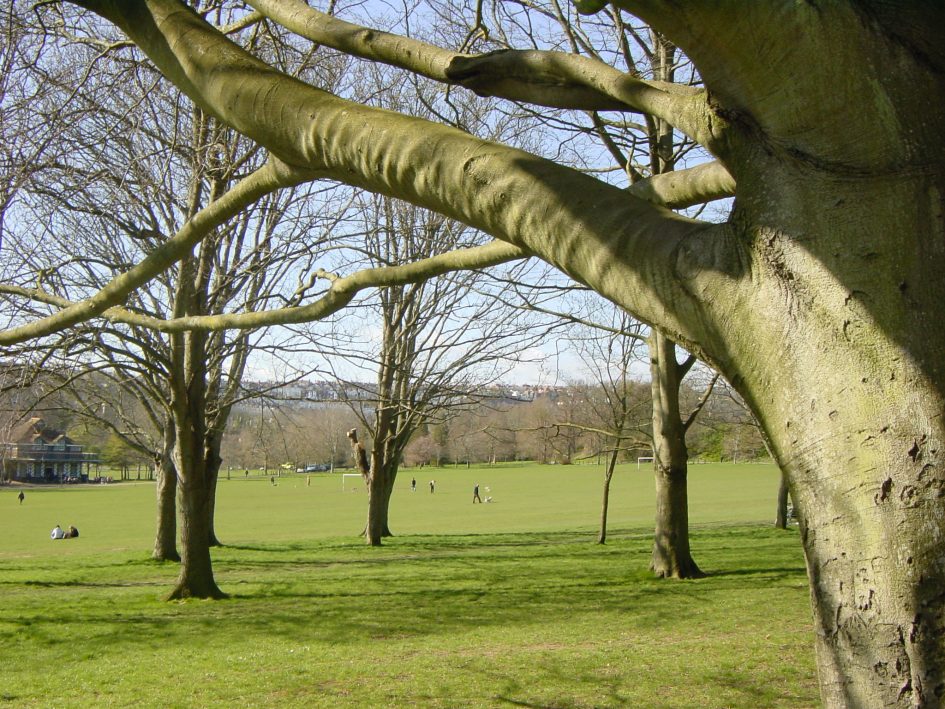
If you wanted files even more unwieldy, you could set the P1 to record uncompressed TIFFs, not only tying-up the camera for the best part of 30 seconds but also unable to squeeze even a single one onto the supplied 8MB card. A monochrome option for document capture as well as an animated GIF mode were also available.
With both cameras in my hands today, the big question for me was whether the Zeiss lens on the S70 really gave it better quality than the P1? Here’s a landscape shot I took with both cameras in 2022 and remember they share the same 3.3 Megapixel sensor. Taking a close look at the details shows the S70 on the right arguably resolving slightly finer detail, especially in the corners, but there’s not a lot in it for a daytime shot.
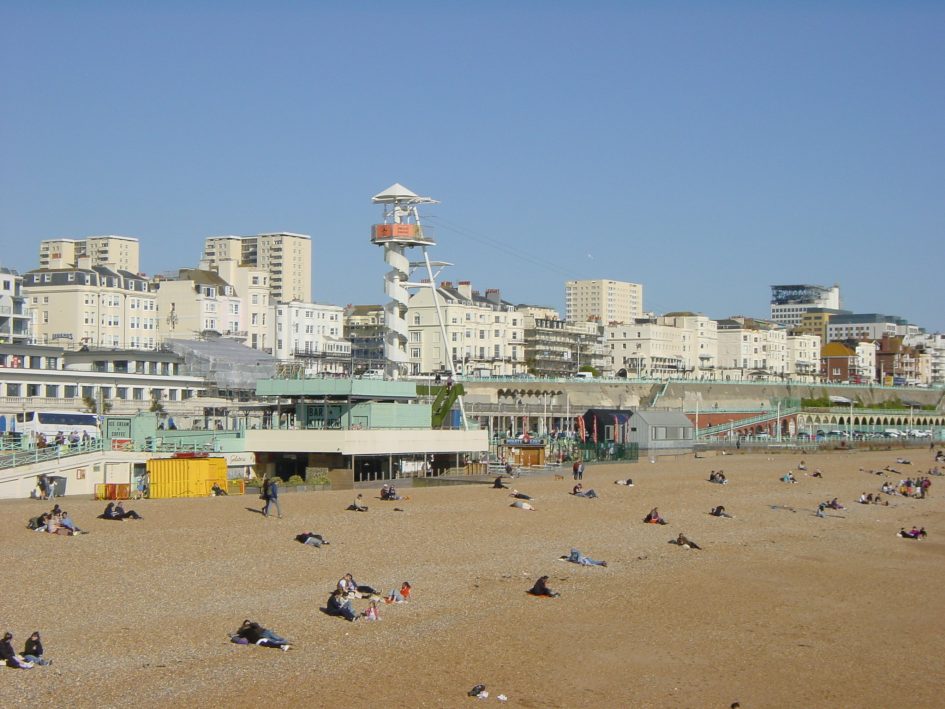
How about a portrait comparison at their maximum zooms? Looking beyond the odd colours, the S70 on the right has delivered a much crisper image under these conditions, although while it also allowed me to select the much brighter aperture, there’s not a huge difference in background blur.
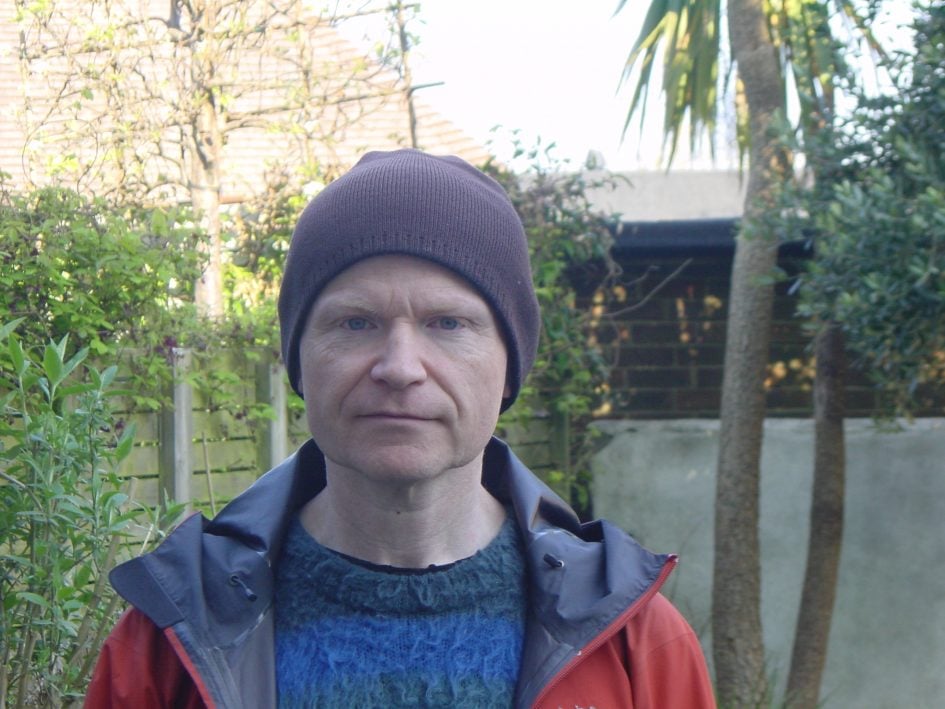
Taking this to the extreme, here’s a macro shot, taken at the closest focusing distance of each camera with their lenses set to wide and using their maximum apertures of f2.8 for the P1 on the left and f2 for the S70 on the right. Looking closer shows neither lens has particularly attractive rendering, but the closer focusing and brighter aperture of the S70 on the right is delivering a larger subject with greater blurring in the background.

So the S70 could capture better-looking images in some situations with greater flexibility too, but the images above show how well the P1 can perform as a general-purpose camera around town.
Sony Cyber-shot P1 verdict
The Sony Cyber-shot P1 was certainly an exciting camera back in the year 2000, packing the latest 3 Megapixel CCD sensor into a surprisingly compact body that managed to house a 3x optical zoom that retracted inside. It was ground-breaking at the time and even two decades later looks advanced and drew admiring glances from passers-by.
The P1 proved tremendously popular, spawning multiple successors over half a decade, ending with the P200 in 2005. By this time though, Sony had several alternative solutions for compact cameras, including the ultra-thin T-series, not to mention many in the S and W ranges. But during its five year lifespan, the P-series sold well, finding itself in the hands of many happy photographers.
In fact had the P1 been available when I originally bought my own S70, I think I’d have chosen it over the more sophisticated model. That compact body with a retracting lens and automatic cover was more useful to me in practice than having semi-manual control and slightly sharper optics.
Check ebay to find vintage gear! Lost, deleted or corrupted photos? I recover mine with Stellar Photo Recovery! PS - if you enjoy my reviews, videos and guides, you can support me my treating yourself to a copy of my In Camera book, an official Cameralabs T-shirt or mug, or by treating me to a coffee! Thanks!